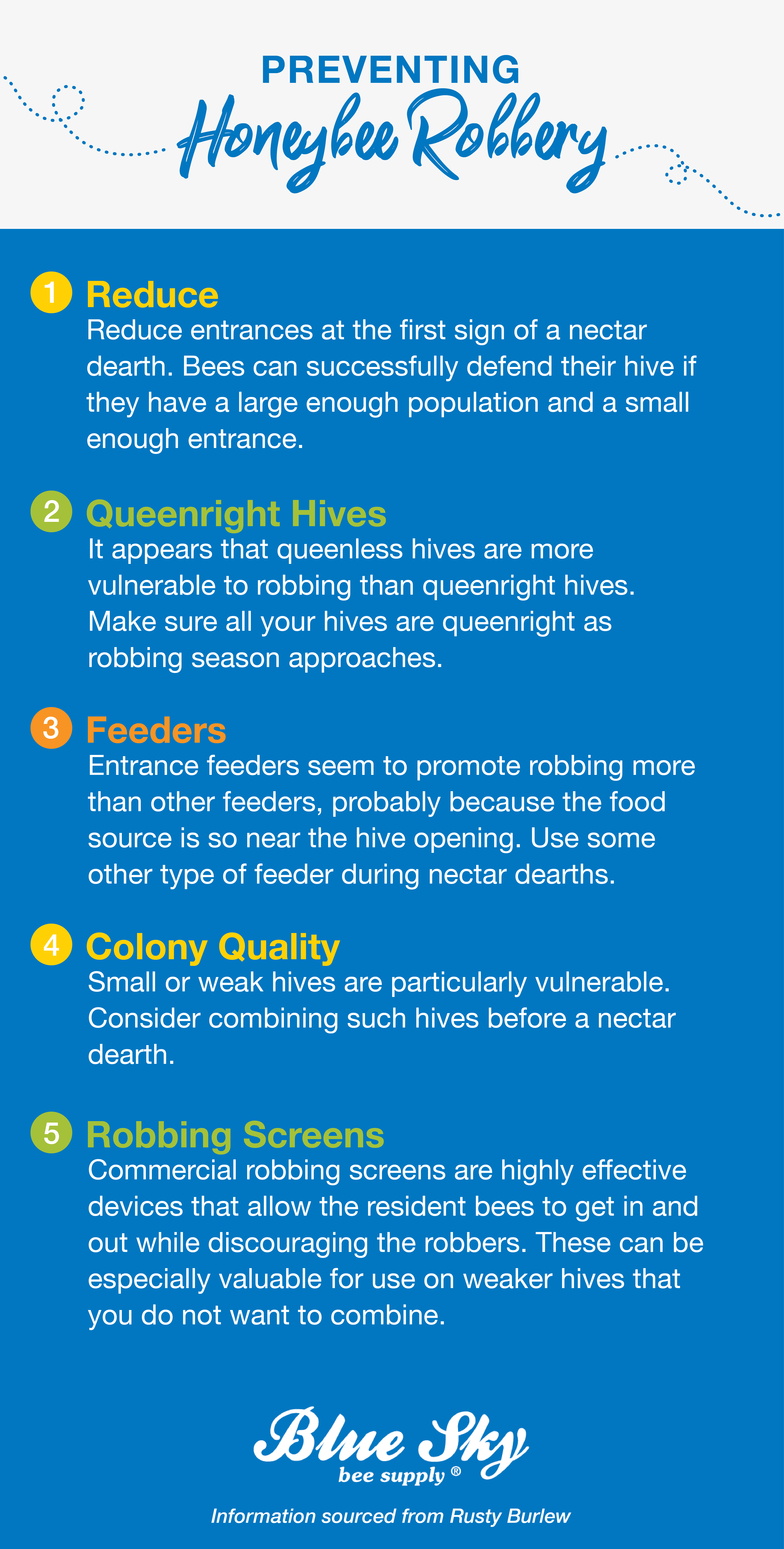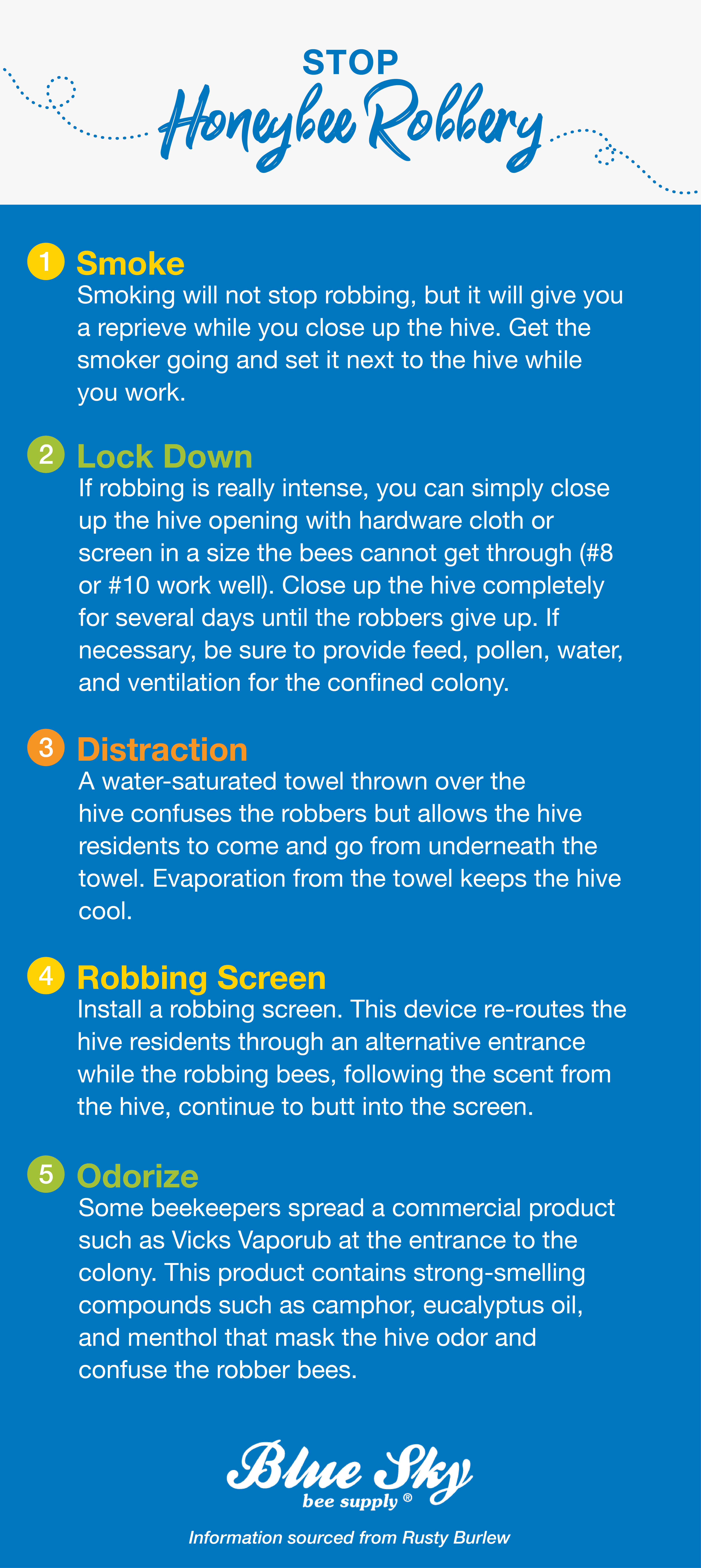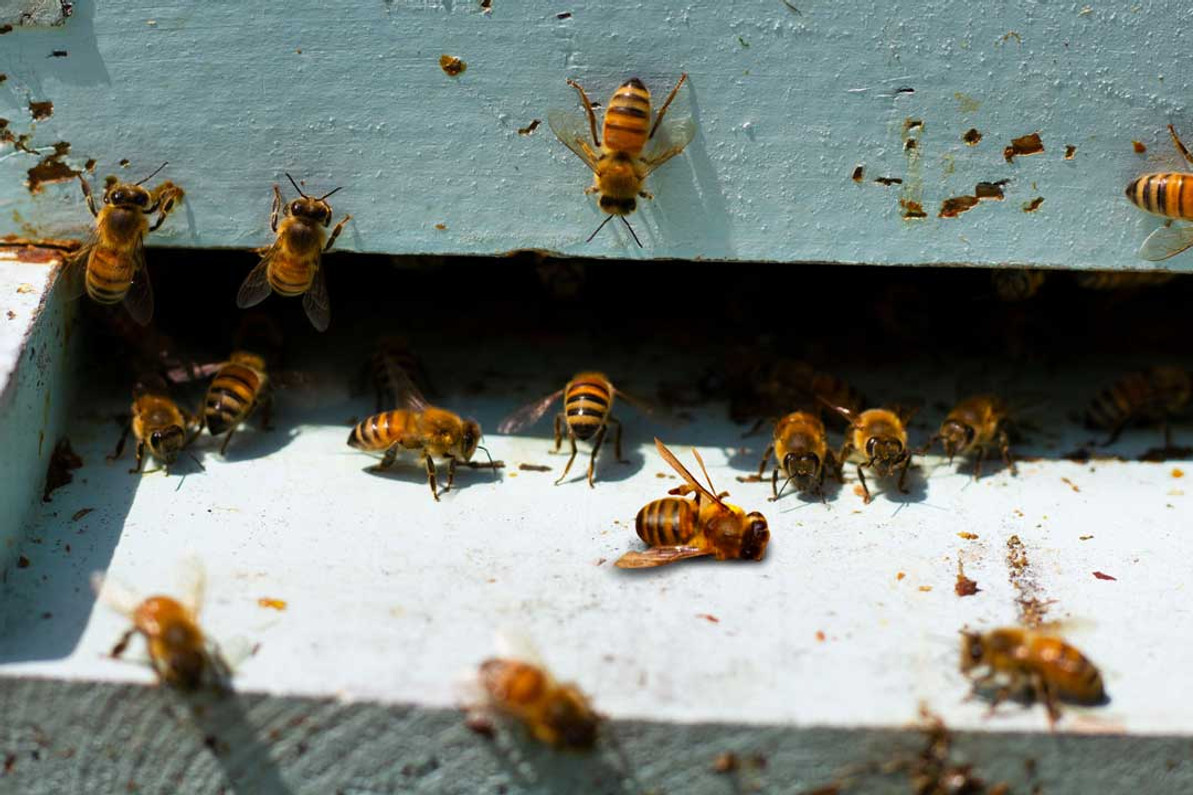Robbing Honeybees: Detection and Prevention
As a beekeeper, it is important to be able to understand what robbing is and how to recognize the behavior. Robbing describes the activity of honeybee invasion on another hive and loot their honey stores. The process is not all that easy; the honeybees will fight the resident bees until they reach the stores even if it means death. The bees break open capped cells, fill their stomachs, and return to their own hive.
Robbing is evident primarily during the late summer to early fall. Robbing can also take place in the early spring as well right before the first major honey flow. Bee populations increase during nectar flows. When nectar flow comes to a halt, you may notice an increase in population and fewer available nectar resources in their surrounding environment. This results in old forager bees seeking out weaker hives from which they can rob nectar and honey resources from. These bees may invade colonies through the entrance or through any holes, or cracks. Beekeepers working their colonies throughout nectar dearths make their colonies susceptible to robbery. It is important to acknowledge periods of nectar dearth to identify possible early signs of robbing behavior.
It is important to note that robbing promotes significant bee drift, or movement of individual bees from their home colonies to other colonies. This increases the risk of transferring pests and diseases between colonies. 1
When a hive is being robbed, the number of bees flying around dramatically increases as they scope the outside of nearby colonies. Bees are commonly found fighting at the entrance of the hive as they attempt to get in. As a result, you may find a lot of dead bees at the entrance. Furthermore, remnants of wax or other beehive debris may be found under the colony being robbed. Bees will continue this behavior until the hive is totally depleted which can conclude within hours to days. Below are infographics on how to detect, prevent, and stop honeybee robbery.



Purchase Robbing Screens: https://blueskybeesupply.com/search.php?search_qu...
References
1). Willingham, R., Klopchin, J., & Ellis, J. (2021, July 19).ROBBING BEHAVIOR IN HONEY BEES. Eny-163/IN1064: Robbing behavior in Honey Bees. Retrieved September 21, 2022, from https://edis.ifas.ufl.edu/publication/IN1064
2). Burlew, R. (2022, July 20).Robbing bees: Questions and answers. Honey Bee Suite. Retrieved September 21, 2022, from https://www.honeybeesuite.com/robbing-bees-questions-and-answers/
Recent Posts
-
Unleashing the Sweet Potential: A Comprehensive Guide to Honey Marketing
Introduction: In the buzzing world of beekeeping, producing high-quality honey is just the beginnin …May 17th 2024 -
Beekeeper in the Big Apple
Home to the busiest streets in America, cars lined bumper to bumper, herds of young professionals ma …Sep 28th 2022 -
Robbing Honeybees: Detection and Prevention
As a beekeeper, it is important to be able to understand what robbing is and how to recognize …Sep 22nd 2022




